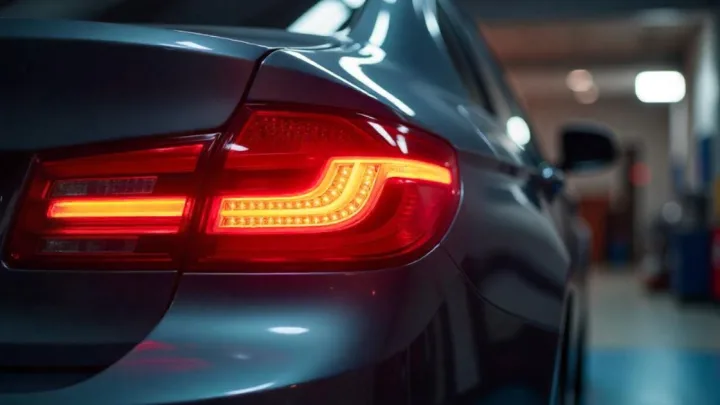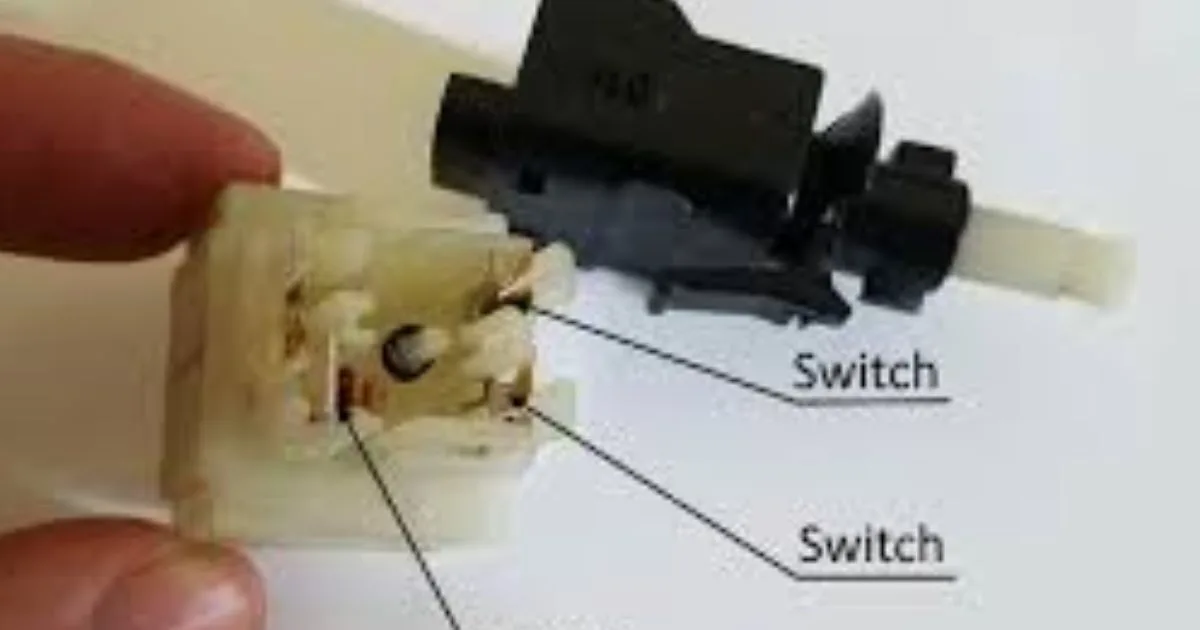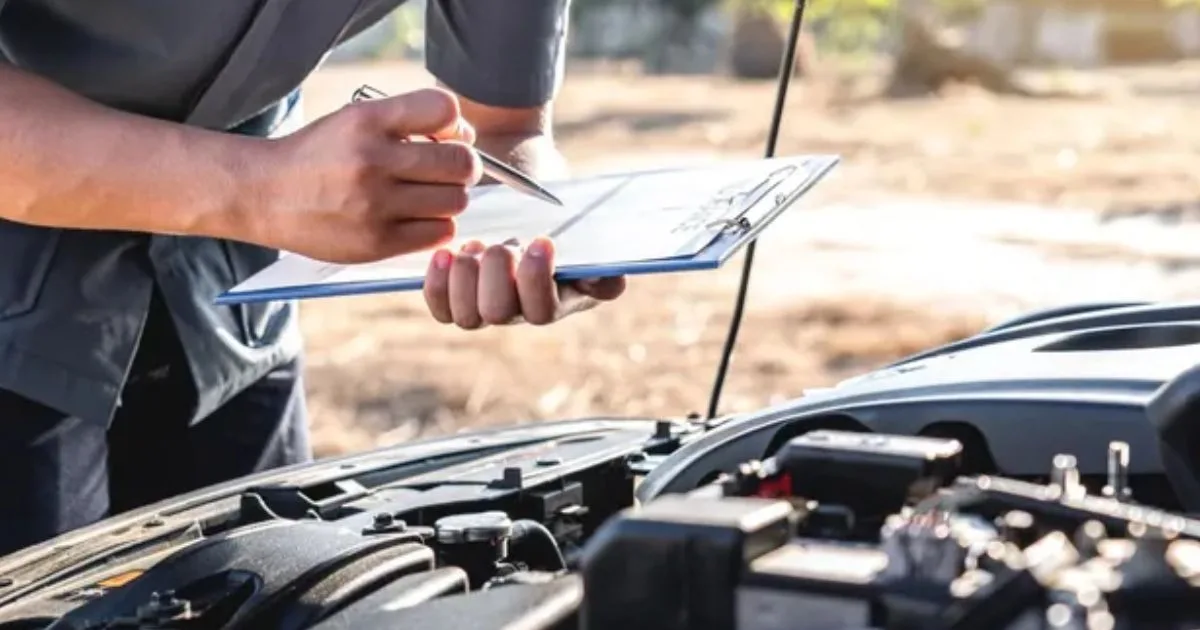
Center brake lights, essential for road safety, often face issues like bulb failure or wiring problems. Fixes range from simple bulb replacement to wiring inspection.
The center brake light, also known as the third brake light, plays a critical role in ensuring your vehicle is visible to drivers behind you, especially when stopping. Despite its importance, this light can encounter several common problems that can compromise your safety and the safety of others on the road.
Understanding these issues and knowing how to address them promptly can save you from potential hazards and even legal troubles. This discussion will guide you through identifying and fixing the five most frequent problems associated with center brake lights. By keeping this information in mind, drivers can maintain their vehicles more effectively and navigate the roads with an added layer of security.
Introduction To Center Brake Lights
Introduction to Center Brake Lights – a crucial component of vehicle safety, often overlooked until it malfunctions. These lights serve as a clear signal to drivers behind, indicating when the vehicle ahead is slowing down or stopping. Recognizing and addressing issues with center brake lights can prevent accidents and ensure compliance with traffic laws.
The Role Of Center Brake Lights
- Alerts drivers when you apply the brakes
- Enhances visibility of your stopping intention
- Positioned high for easy viewing by others
Safety Implications
- Reduces risk of rear-end collisions
- Essential for driving in adverse weather
- Legal requirement for road safety
 Burnt Out Bulbs
Burnt Out Bulbs
Burnt Out Bulbs
One of the most common issues with center brake lights is burnt out bulbs. These essential components ensure that your vehicle remains visible when braking. A non-functional center brake light can compromise safety and is often illegal. Let’s explore how to tackle this problem.
Identifying A Burnt Out Bulb
Spotting a burnt out bulb in your center brake light is straightforward. When the brake pedal is pressed, if the center light doesn't illuminate, the bulb may be the culprit. Another way to check is by looking at the filament inside the bulb; if it's broken, the bulb needs replacing.
Step-by-step Bulb Replacement
- Turn off your vehicle and open the trunk.
- Locate the center brake light housing and remove it.
- Twist the bulb socket counterclockwise and pull it out.
- Extract the old bulb by pulling it straight out.
- Insert a new bulb by pushing it firmly into the socket.
- Re-insert the bulb socket and twist to lock it in place.
- Test the new bulb by pressing the brake pedal.
- Replace the housing cover and secure any fasteners.
Replacing a burnt out bulb is a simple DIY task. Always use the correct bulb type for your vehicle. Check your vehicle’s manual for specific instructions.
Faulty Wiring Issues
Center brake lights are crucial for safety. They alert drivers when you're stopping. But sometimes, they fail.
Often, it's due to faulty wiring. Let's dive into the symptoms and fix these issues.
Symptoms Of Wiring Problems
- Intermittent light function: The light flickers or doesn't turn on.
- Blown fuses: Repeated fuse issues could point to wiring faults.
- Burnt smell: Damaged wires may emit a noticeable odor.
Diy Wiring Repair Tips
Fixing brake light wiring can be simple. Follow these steps for a safe, effective repair.
- Disconnect the battery: Safety first. Always disconnect the battery.
- Access the wiring: Remove the light's housing to reach the wires.
- Inspect for damage: Look for frayed or corroded wires.
- Trim and reconnect: Trim damaged wires. Use wire connectors to rejoin.
- Test the repair: Reconnect the battery. Test the brake light.
Always use the right tools and follow car manuals for specific guidance. If in doubt, consult a professional.
Blown Fuses
One common issue with center brake lights is Blown Fuses. A fuse protects the brake light circuit. It cuts the power if the circuit gets too hot. This stops fires. But, it means your brake lights might not work if the fuse blows.
Locating The Brake Light Fuse
Finding the brake light fuse is your first step. Most cars have a fuse box under the dashboard or in the engine bay. Your car's manual shows where the fuse box is. It also tells which fuse is for the brake lights.
- Open the fuse box.
- Look for the brake light fuse. The manual helps.
- Check if the fuse is blown. A broken wire inside means it's bad.
Replacing A Blown Fuse
Replacing a bad fuse is easy. You need a new fuse with the same amperage.
- Turn off your car.
- Remove the bad fuse with fuse pullers or tweezers.
- Put in a new fuse of the same type.
- Check the brake lights by pressing the brake pedal.
Always use the correct amperage fuse. The manual or old fuse shows this. Using the wrong fuse can cause damage or a fire.
 Malfunctioning Brake Light Switch
Malfunctioning Brake Light Switch
Malfunctioning Brake Light Switch
The Malfunctioning Brake Light Switch is a common car issue. This part tells your car's brake lights to turn on. If it breaks, the lights won't work. Let's learn how to fix it.
Diagnosing Switch Issues
First, we need to find out if the brake light switch is the problem. Here are steps to check:
- Locate the switch near the brake pedal.
- Press the brake pedal. Ask a friend to see if lights work.
- If lights stay off, the switch might be broken.
Tools needed: A multimeter. This tool checks for electrical problems.
- Disconnect the switch.
- Set the multimeter to measure resistance.
- If the multimeter shows no change, the switch is bad.
Switch Replacement Procedure
Found a bad switch? Let's replace it. Follow these simple steps:
- Buy a new switch. Make sure it matches your car model.
- Turn off your car. Safety first!
- Remove the old switch. It's near the brake pedal.
- Install the new switch. Put it where the old one was.
- Reconnect any wires. They power the switch.
- Test the brakes. Press the pedal and check the lights.
Done right, your brake lights will work again!
Led Failures
LED failures can be a real headache when it comes to your car's center brake light. This small but crucial component is key for safety on the road. LEDs are favored for their longevity and brightness, but they can still run into issues. Let's explore some common LED problems and how to address them.
Understanding Led Lifespan
LEDs boast a long life. Yet, they don't last forever. Factors like heat, voltage, and usage affect lifespan. Most LEDs should shine for about 25,000 to 50,000 hours. When they fail, it's often not the LED itself, but related components.
Troubleshooting Led Components
Diagnosing LED issues involves several steps. First, check the fuse. A blown fuse could cut power to the brake light. Next, inspect the wiring. Frayed or loose wires need fixing or replacing. Finally, examine the LED strip or bulbs. Look for visible damage or burnt-out sections. If the LED unit is the problem, replace it to restore function.
| Problem | Solution |
|---|---|
| Blown Fuse | Replace with new one |
| Bad Wiring | Repair or replace wires |
| Damaged LEDs | Replace LED strip or bulbs |
- Always use the correct fuse rating.
- Secure all connections tightly.
- Choose quality LED replacements.
For LEDs that won't light up, the issue might be simpler than you think. A professional can quickly identify the problem. They will fix it to keep you safe on the road.
Poor Ground Connection
Poor Ground Connection can cause center brake lights to fail. A strong ground ensures electrical circuits complete properly. Without it, brake lights may work intermittently or not at all. Let's look at how to spot and fix grounding issues.
Detecting Ground Connection Problems
Identifying a bad ground connection involves simple steps:
- Inspect the brake light's ground wire.
- Look for corrosion or damage.
- Use a multimeter to check continuity.
A reading that fluctuates or shows no continuity suggests a problem. This means the ground wire may not be conducting electricity as it should.
Improving Ground Connectivity
Improving ground connectivity involves several fixes:
- Clean the ground connection point.
- Remove rust or paint that may block the connection.
- Secure the ground wire firmly.
- Replace the wire if damaged.
Use dielectric grease to protect the connection from future corrosion. This will help maintain a strong ground and keep brake lights functioning correctly.
 Preventive Measures And Maintenance
Preventive Measures And Maintenance
Preventive Measures And Maintenance
Preventive Measures and Maintenance are key to avoid issues with your center brake light. Regular checks and care help prevent accidents. Stay safe on the road with these tips.
Routine Checks
- Inspect the center brake light monthly.
- Look for bulb brightness and damage signs.
- Test the light function by pressing the brake pedal.
- Ensure the light cover is clean and clear.
- Replace bulbs with dimmed brightness promptly.
Long-term Care Tips
- Use high-quality bulbs for replacements.
- Keep spare bulbs in your car for quick fixes.
- Clean the light cover regularly to avoid dirt buildup.
- Check the wiring occasionally for wear and tear.
- Consult a professional for complex electrical issues.
Proactive maintenance saves time and money. Your brake light stays reliable. Enjoy safer drives by following these tips.
Frequently Asked Questions
Why Is My Center Brake Light Not Working?
The center brake light might not work due to a blown fuse, faulty wiring, or a burned-out bulb. Check the fuse box and replace any blown fuses. Inspect the wiring for damage and ensure the bulb is properly seated or replace it if necessary.
Can A Faulty Center Brake Light Cause Accidents?
Yes, a faulty center brake light can lead to accidents. It's crucial for signaling to drivers behind you when you're stopping. Without this alert, the risk of a rear-end collision increases, especially in poor visibility conditions.
What Are The Legal Requirements For Center Brake Lights?
Center brake lights, also known as third brake lights, are legally required in many countries. They must be fully functional and clearly visible to comply with safety regulations and avoid potential fines or legal issues.
How Do I Troubleshoot A Center Brake Light Problem?
Begin by checking the bulb and fuse. If these are intact, inspect the brake light switch, typically located near the brake pedal. If the issue persists, consult a professional mechanic as it might be a more complex wiring problem.
Related Post
5 Quick Fixes for Stuck Brake Lights
Brighten Up Your Drive: The Ultimate Guide to Car Headlights
Why Every Car Owner Needs a Reliable Boot Lamp
Top Tips for Maintaining Your Car Headlight Motors
Choosing the Right Car Fog Lights: A Comprehensive Guide
Top Features to Look for in Registration Plate Lamps
Conclusion
Wrapping up, tackling center brake light glitches boosts both vehicle safety and compliance with road regulations. By understanding common issues and their solutions, drivers can ensure their brake lights function reliably. Remember, regular maintenance is key. Drive safe and keep those brake lights shining bright!
Disclosure
Some links may be affiliate links. That means we may earn a small commission at no extra cost to you.